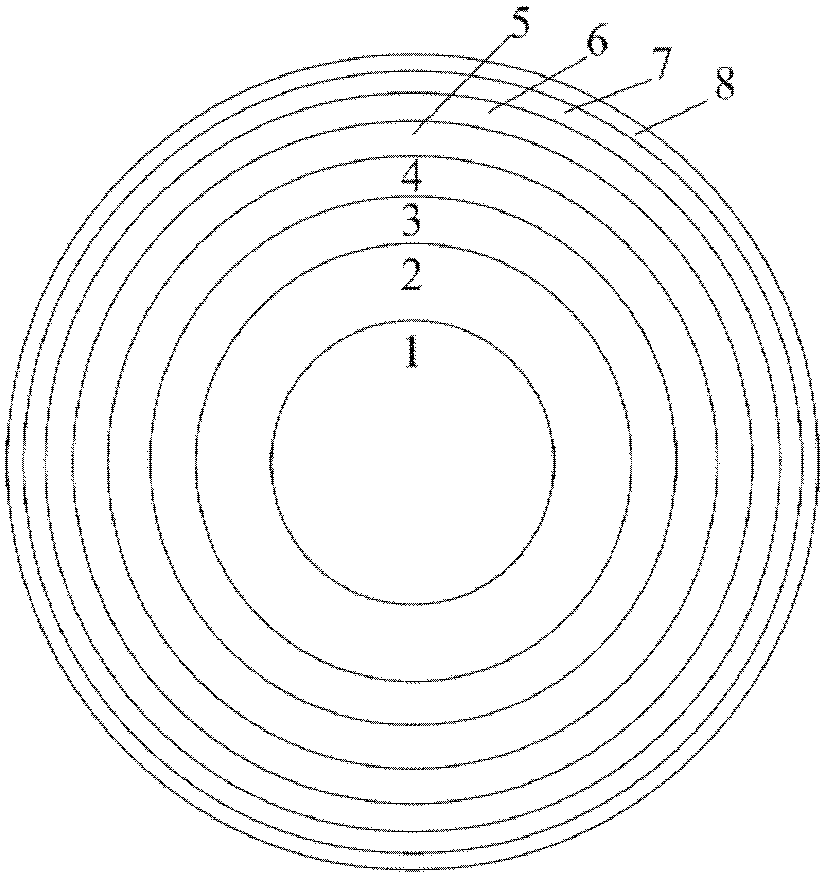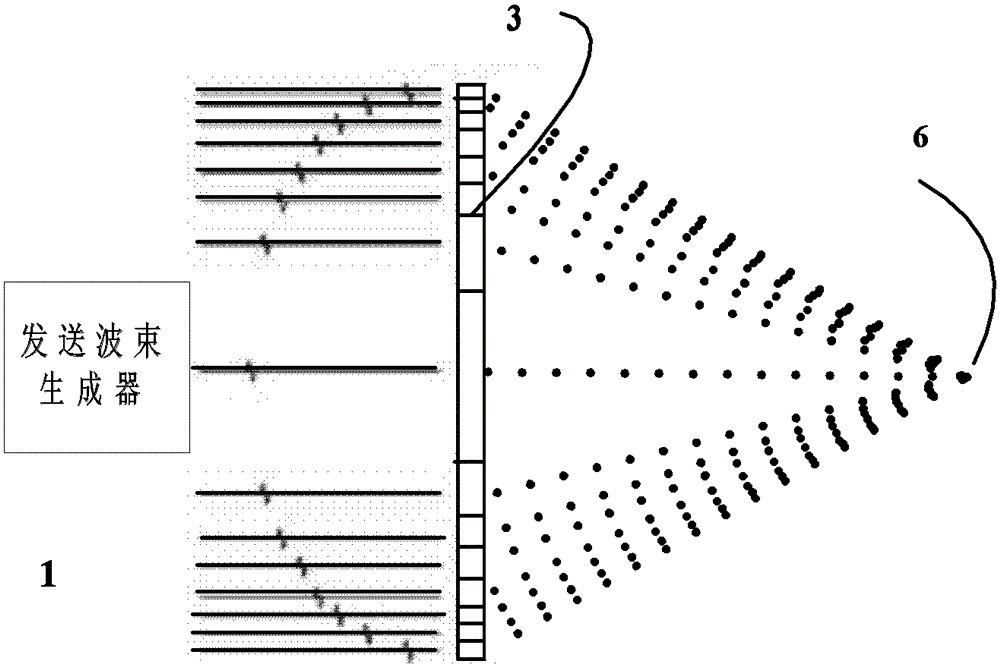Ultrasonic imaging system and imaging method
An imaging system and ultrasonic technology, applied in ultrasonic/sonic/infrasonic diagnosis, sonic diagnosis, infrasonic diagnosis, etc., can solve problems such as unbalance, narrow lateral resolution of visible area, etc., to achieve the best image effect
- Summary
- Abstract
- Description
- Claims
- Application Information
AI Technical Summary
Problems solved by technology
Method used
Image
Examples
Embodiment Construction
[0027] combine Figure 1 to Figure 9 The principle of the ultrasonic imaging system of the present invention is explained. Such as figure 1 The ultrasonic imaging system of the present invention shown has five main parts: a transducer 3, a transmit beamformer 1 connected thereto, a scanning motor controller connected to the transducer 3 and transmit beamformer 1, and a transmit beamformer The receiving beam processor 4 connected with the device 1 and the electronic computer 5 connected with the receiving beam processor 4. Among them, the transducer 3 is a high-frequency ultrasonic (ultrasonic signal frequency is 15MHZ-80MHZ) transducer, under the excitation of multiple high-voltage pulse signals (excitation signals) with different delays generated by the transmitting beamformer 1, the transducer 3 Generate ultrasonic waves. Under the control of the scanning motor controller 2, the annular array transducer 3 can perform sectoral scanning, horizontal scanning and fixed scanni...
PUM
 Login to View More
Login to View More Abstract
Description
Claims
Application Information
 Login to View More
Login to View More - R&D
- Intellectual Property
- Life Sciences
- Materials
- Tech Scout
- Unparalleled Data Quality
- Higher Quality Content
- 60% Fewer Hallucinations
Browse by: Latest US Patents, China's latest patents, Technical Efficacy Thesaurus, Application Domain, Technology Topic, Popular Technical Reports.
© 2025 PatSnap. All rights reserved.Legal|Privacy policy|Modern Slavery Act Transparency Statement|Sitemap|About US| Contact US: help@patsnap.com



